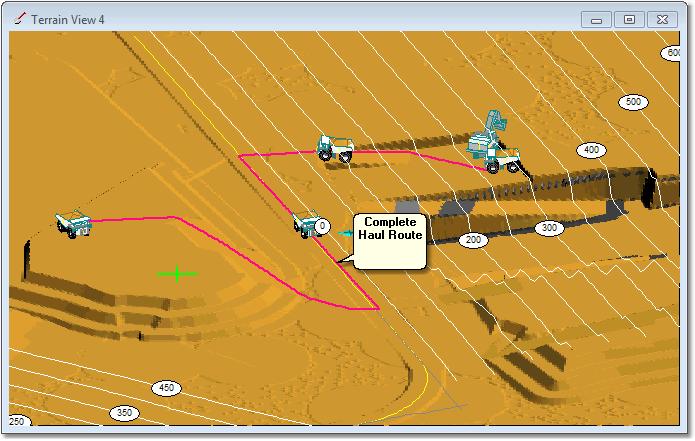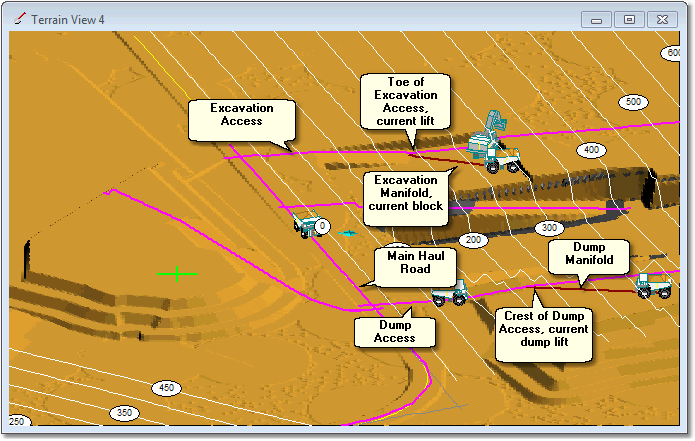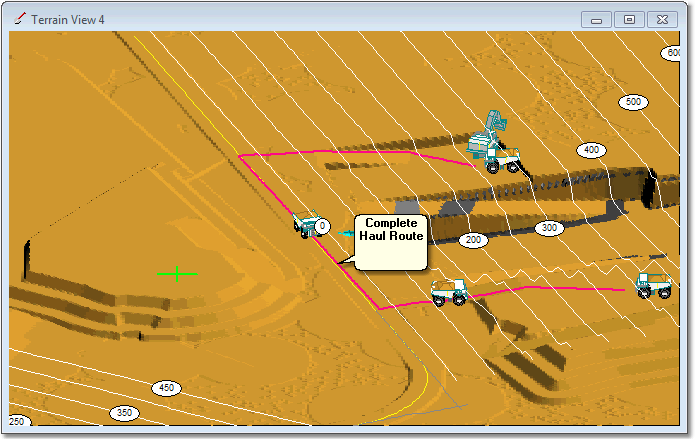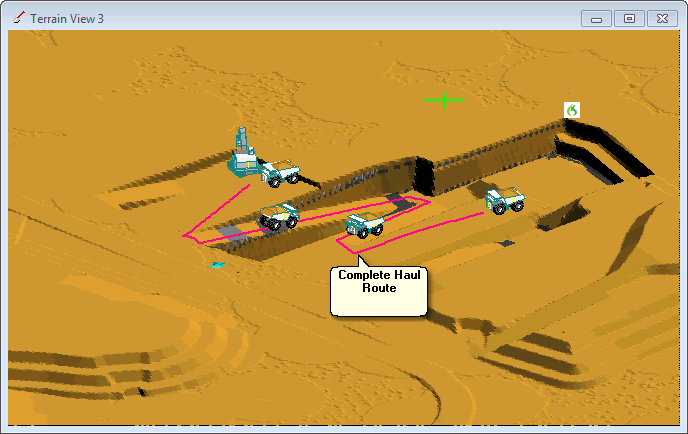|
<< Click to Display Table of Contents >> Relationship between Subsequences, Dumps and Roads |
  
|
|
<< Click to Display Table of Contents >> Relationship between Subsequences, Dumps and Roads |
  
|
In order to grasp the techniques of assigning Roads to Subsequences it is important to understand how the Complete Haul Route is assembled from the Road components and how Haul Routes vary with Subsequences and Dumps.
The following figures illustrate the various Road Types (components) and the resultant Complete Haul Route used to determine Truck Cycle Times:

3d-Dig Road Types

Complete Haul Route, servicing individual Block and Dump Point
The above figure shows the excavation of a Block in a particular Subsequence with material reporting to a nominated Dump. Typically Subsequences have a hierarchy of Dumps assigned. When one Dump is full material reports to the next Dump in the hierarchy. The figure below shows the same Subsequence waste reporting to a different dump:

Road Types example, low wall Dump

Complete Haul Road, servicing low wall Dump
From the above figures it can be seen the 3d-DigPlus takes a set of Road components and establishes an Complete Haul Route to service the current Excavation Block and Dump Point. It can also be seen that the Road components required vary depending on the particular Dump to which material from a Subsequence is reporting. In this example the Dump to which waste reports changes, however the Excavation Access and Main Haul Route are the same for both Dumps. Only the Dump Access changes when the Dump changes.
Potentially Excavation Access, Main Haul Road and Dump Access can change when a Subsequence's waste reports to a different Dump. The figures below demonstrate the situation, where waste from the Subsequence in the figures above now reports to a dump access via the pit floor:

Road Types Example, Haul Down Excavation Access

Complete Haul Route, Haul Down Excavation Access
It can be seen in the above figures that altering the dump to which waste reports from a Subsequence changes Roads used.
The second dumping option involves a Haul Down Excavation Access Road and a Main All Road located on the pit floor. When a Road is used as a Haul Down Excavation Access, 3d-DigPlus uses the crest of its Vertical Alignment for the current Excavation Lift is the point where trucks exit the Road and join the Excavation Manifold.
Note that the Main Haul Road located on the pit floor extends across all Strips. Only a small portion of this Road is used for each strip. However it is much more convenient to create a single road to service all strips and create small Main Haul Roads for each strip.
In order to grasp the processes involved in assigning Dumps to Subsequences is important to understand the scope of application of the various Road Types.
The following table lists the road type and their scope of application.
Road Type
|
Description |
Typical Scope of application |
Excavation Manifold |
Highly dynamic Road, links Excavation Access and current Excavation Block
|
Services Current Block only |
Excavation Access |
Dynamic Road, extends as necessary to service Excavation Lifts and Passes, links Excavation Manifold and Main Haul Road |
Services many passes, generally confined to a single Strip |
Main Haul Road |
Permanent or semi-permanent Road, links Excavation Access and Dump Access |
Services many Strips and Dumps |
Dump Access |
Dynamic Road, extends is necessary to service Dump Lifts and passes, links Excavation Manifold and Main Haul Road |
Services many Dump Passes, generally confined to a Single Dump |
Dump Manifold |
Highly dynamic Road, links Dump Access and current Dump Point |
Services current Dump Point only |